How U.S. Artillery in Iraq Regained Its Status as ‘King of Battle’
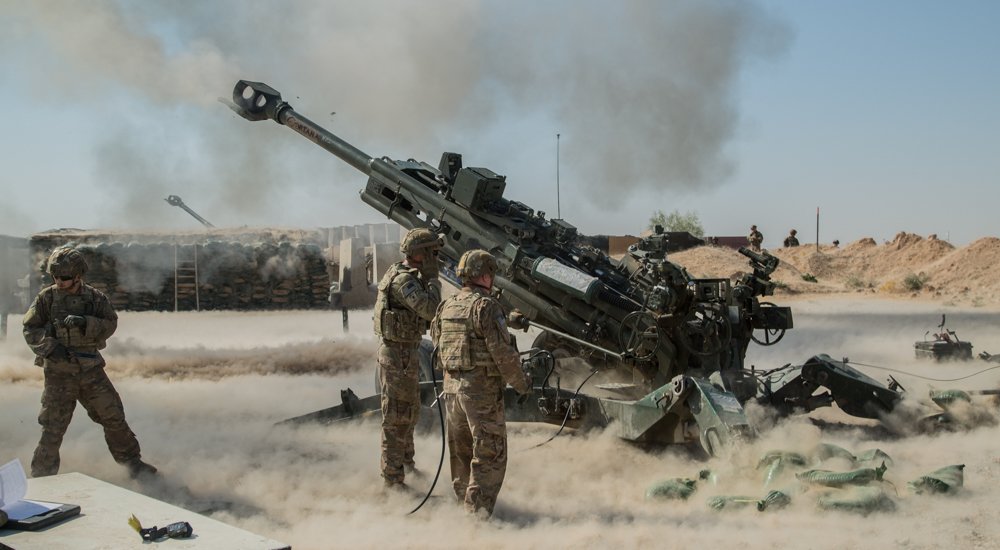
In support of the Iraqi Security Forces (ISF), U.S. Army soldiers assigned to the 2nd Battalion, 8th Field Artillery Regiment, 1st Brigade Combat Team, 25th Infantry Division, fire their M777 towed 155 mm Howitzer at Qayyarah West Airfield, Iraq, September 10, 2019. Photo courtesy of DVIDS/Spc. Kahlil Dash.
A handful of soldiers looked up at a screen showing a group of mysterious figures moving through a field. Their shapes and movement were unusual, and with the angle of the sun, they were casting very large shadows. The soldiers had already ruled out the possibility of the figures being human. Some suggested wild dogs or coyotes; others suggested goats. One or two joked about science fiction monsters and aliens.
Modern video surveillance technology has made impressive strides over the years. From the sky, military aircraft can transmit live footage of the battlefield in a way that was once in the realm of science fiction. Pop culture often depicts the footage in sharp HD that is easily “enhanced” for clarity to the point that it has become a punchline. Despite these strides, the reality is that the imagery is often grainy, pixelated, and often requires a lot of observation, context, and guesswork to interpret.
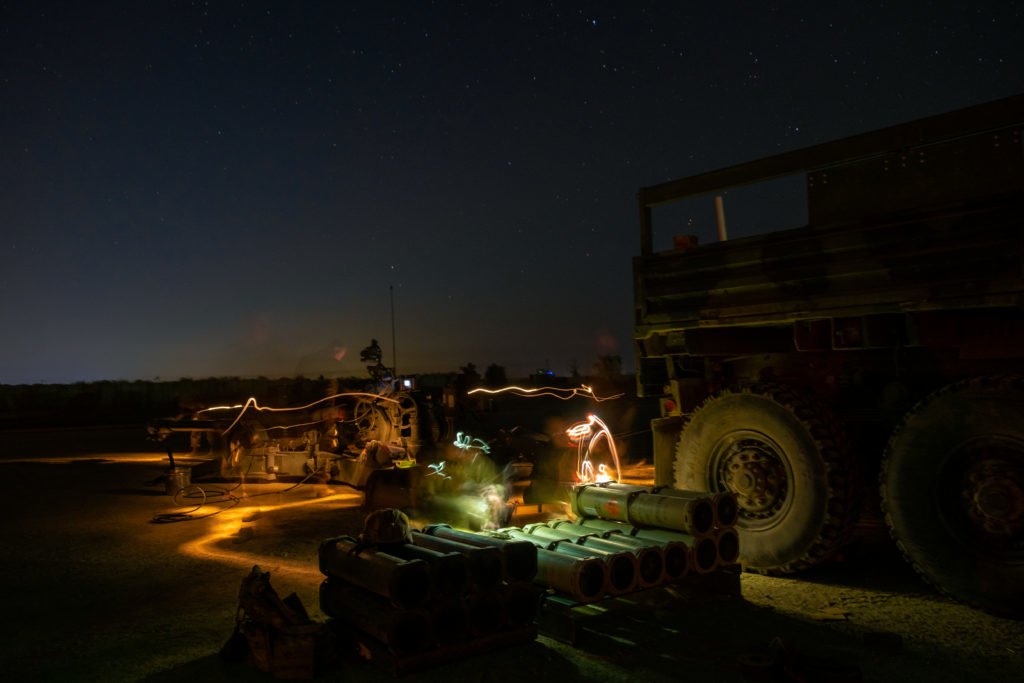
At the 2-8 Artillery Battalion’s Tactical Operations Center (TOC), soldiers are inundated with images, intelligence, and reports about the comings and goings in northwestern Iraq as they scan their battlespace for ISIS targets. The 2-8 operates from a large American compound inside Qayyarah West Airfield — an Iraqi Air Base in Saladin Province, Iraq that is often referred to as simply “Q-West.”
After several minutes of debate, battalion commander Lieutenant Colonel Stephen Thibodeau — who most of the soldiers know simply as “Colonel T” — concluded, “Oh, hey! They’re not goats, they’re chickens. You can see the wings there flapping.” It had been a relatively slow and uneventful November day on Q-West in Iraq, but the guessing game provided some brief entertainment for the soldiers looking at the screens.
“It looks like what we have here is a very sophisticated agricultural operation here. They’re very proficient at poultry raising here. From here, they look healthy, plump and plentiful. Which is great for them, honestly, a very good thing,” Thibodeau continued with deadpan delivery as some of the other soldiers snickered. “But it’s probably not something that we need to be overly worried about.”
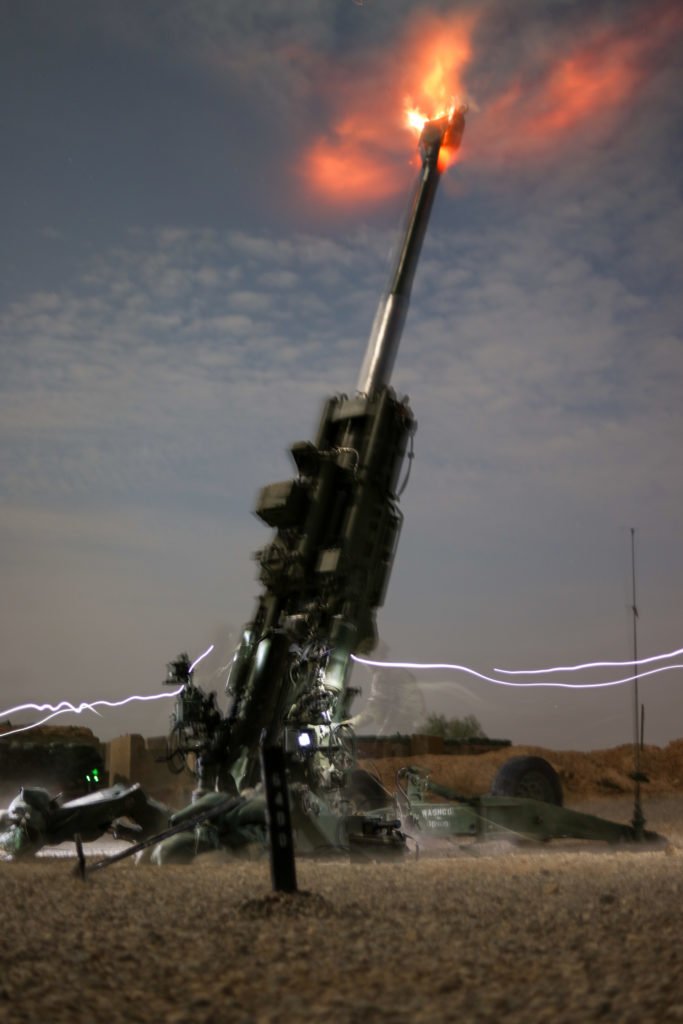
Other soldiers started commenting that the emerging figures seemed to be wearing colorful fabric blowing in the wind — likely dresses — and reasoned that it meant they were looking at Iraqi women working the farm. “Yep, looks like just women, kids,” said Sergeant First Class Matthew Dawson.
However, Dawson added that though it looked like there was no overt ISIS activity, the militants regularly use safe houses that double as homes for local families, hoping that the presence of women and children will throw the Coalition off their trail, or at least make them think twice before firing. The militants know that cameras in the sky are watching them. Many of the ISIS holdouts have firsthand experience with Coalition air and artillery strikes — and they’re not eager to invite more if they can avoid it.
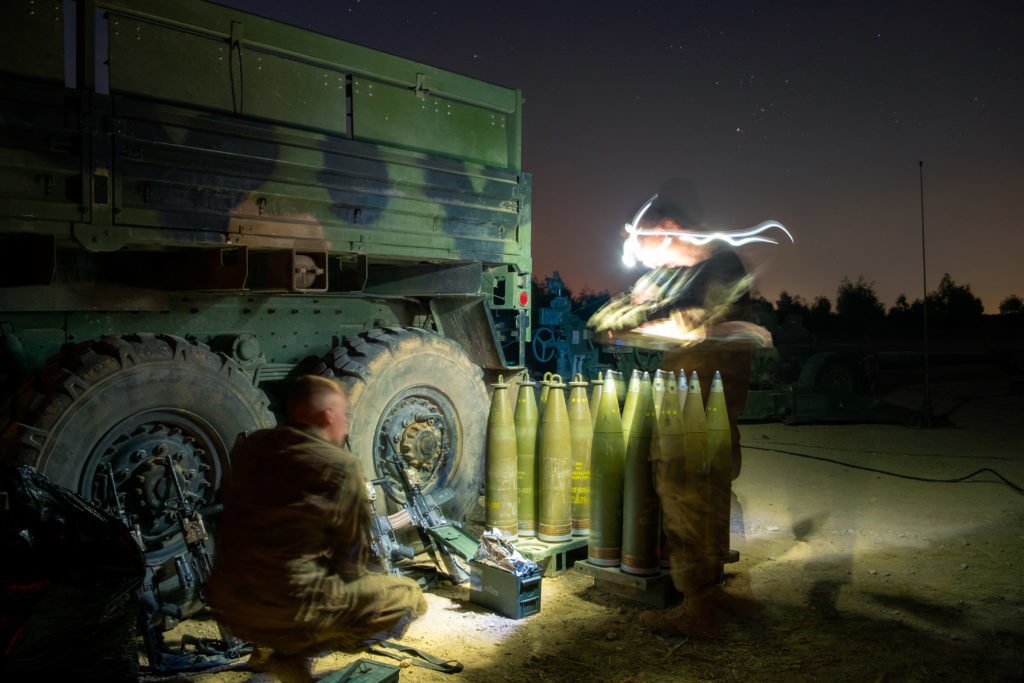
The various howitzers, mortars, and rockets that make up both light and heavy artillery are known in military jargon as “indirect fire.” Though targeting systems have become much more advanced than the days of old — allowing for both greater precision against the enemy and more careful targeting to avoid killing civilians — these weapons unleash incredibly destructive power wherever their munitions land.
The American soldiers in the TOC know that they have to take particular care in wielding that power. Even as ISIS continues to survive in northwestern Iraq, Iraqis are working to rebuild their lives. The campaign to eject ISIS from Mosul and its surrounding towns was destructive — Iraqis are working to rebuild their homes as they continue to count their dead. Unexploded bombs still sit dangerously among the rubble, and the political situation is delicate.
Tensions escalated between Coalition forces and Iran last year as Iranian-backed factions of the Iraqi Popular Mobilization Forces (PMF) began lobbing indirect fire at American positions, including Q-West. Since the summer of 2019, the PMF’s 45th Brigade, better known as Kataib Hezbollah, had been threatening to strike American positions with rockets in retaliation for apparent Israeli drone strikes on its own forces.
The attacks escalated leading up to an attack on Dec. 27, 2019, when Kataib Hezbollah launched 31 rockets at an American compound inside an Iraqi base in Kirkuk. The attack wounded several American and Iraqi soldiers and killed a U.S. contractor — 33-year-old Iraqi American linguist Nawres Hamid. In retaliation, U.S. forces struck several Kataib Hezbollah positions, killing over a dozen fighters.
The campaign to eject ISIS from Mosul and its surrounding towns was destructive — Iraqis are working to rebuild their homes as they continue to count their dead.
Kataib Hezbollah fighters and supporters stormed the U.S. embassy in response. Then an American drone killed Iranian general Qassem Soleimani at Baghdad International Airport. Iran responded with a missile strike on the Coalition’s portion of the Iraqi military’s Al Asad Air Base. The world, and particularly Iraq, continues to grapple with the fallout of the confrontation.
Shortly after Soleimani’s death, the Coalition announced that it would pause anti-ISIS operations as well as advising and training Iraqi troops to focus on self-defense, and several Iraqi politicians demanded that American troops prepare to leave the country. The artillery stopped targeting ISIS, and U.S. troops began hunkering down.
Throughout January, Iranian-backed militias continued periodically firing rockets and mortars at American compounds and at the U.S. Embassy in the Green Zone. Militias, including Kataib Hezbollah, have also violently clashed with Iraqi protesters fed up with Iranian political influence. Meanwhile in the north, Iraqi troops continued hunting ISIS — but did so without the Coalition air and artillery support they relied upon to drive ISIS out of its strongholds.
The coalition had been training Iraqi artillerymen to take over the mission, but for the time being much of that training has been frozen as well. On January 30, Iraqi officials said they had resumed some training and joint anti-ISIS operations with the Coalition, but several U.S. military sources told Coffee or Die that the situation is constantly changing and that artillery strikes have yet to resume.
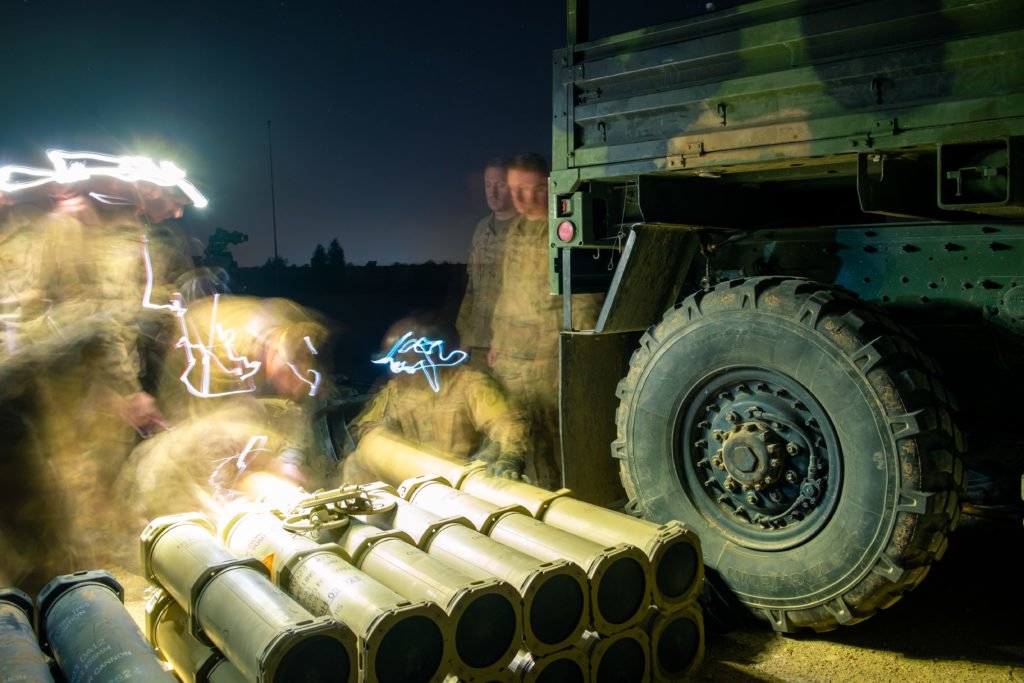
Coffee or Die embedded with U.S. troops last year as tensions between American forces and Iranian-backed militias were beginning to boil and saw up-close the central role artillery has played during operations in the region. Artillery has often been called the “The King of Battle.” General George S. Patton took it a few steps further after World War II, saying, “I do not have to tell you who won the war. You know the artillery did. The artillery conquers, the infantry occupies. Artillery is the god of war.”
But in the post-9/11 era, artillery troops in Iraq and Afghanistan have frequently found themselves taking on duties more familiar to the infantry — foot patrols, guard tower duty, and pulling security while commanders met with local villagers — even as they continued launching fire missions. As the wars began to turn to bloody stalemates, the U.S. military scrambled to develop a new counterinsurgency (COIN) doctrine that called for large numbers of troops to secure territory and root out insurgents.
While implementing the new COIN strategy during troop surges, senior commanders told troops that heavy weaponry like air strikes and artillery should be considered a last resort to avoid racking up civilian casualties and damaging infrastructure — both of which insurgents could use to rally support and recruit more fighters.
But the heavy use of artillery and rockets during the Russian invasion of Ukraine and in other emerging conflicts around the globe have re-energized military planners’ focus on artillery. Syrian Civil War factions in particular, including ISIS, began getting their hands on heavy equipment and heavily shelling both enemy combatants and civilian population centers. In many ways it was the rise of ISIS that led American commanders to learn to love artillery again.

Al Qaeda in Iraq (AQI), the precursor to ISIS, regularly used mortars and rockets for hit-and-run guerilla attacks on Western troops, local forces, and Iraqi civilians. But AQI never had the sort of firepower that ISIS boasted at the height of the Caliphate’s power. When the militants seized Iraqi military bases around Mosul, they captured powerful heavy weapons and munitions, including a handful of American-made artillery pieces and targeting systems.
The jihadists quickly turned their newly acquired hardware against their enemies, particularly in their bloody offensive that punched through Kurdish Peshmerga lines in 2014, leading to the massacre of the Yazidis in Sinjar.
It was the militants’ rapidly unfolding genocide against the Yazidis that finally prompted the United States to return to Iraq as well as enter the fight in Syria. American planes began striking ISIS targets. Soon American military advisers began surging into the region to train Iraqi and Kurdish troops while elite special operations troops joined local forces on raids against ISIS targets.
The U.S. military COIN playbook that had been unleashed on AQI didn’t match the reality of how ISIS was fighting — and, at that time, winning — on the ground. ISIS had tanks, artillery, and even drones and was using its fighters to seize, control, and rule territory. When they took territory, they began digging trenches and setting up fortifications while continuing to expand their reach.
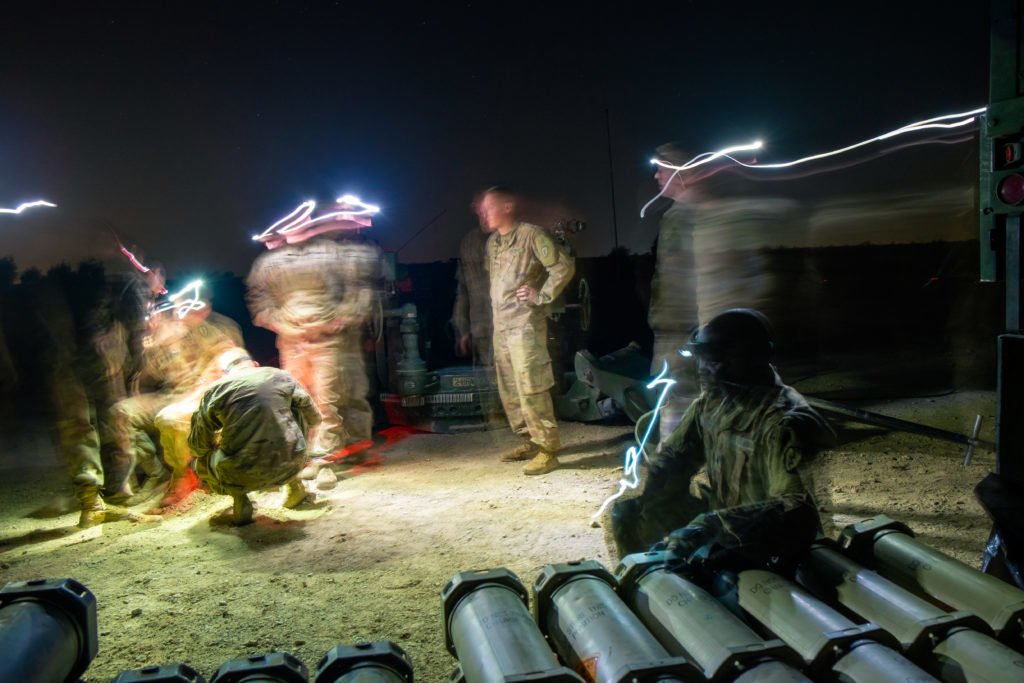
When the group’s leader, Abu Bakr al-Baghdadi, announced in Mosul that it considered all its territory to be part of its Caliphate — and promised to expand — it was clear that ISIS had emerged as a different kind of enemy. More powerful than a typical rag-tag band of guerillas but not quite an army, the group freely mixed classic insurgent tactics and improvised weapons with conventional tactics and hardware on the battlefield.
The United States beefed up the deployment of conventional troops, especially artillerymen. In March 2016, ISIS fighters killed U.S. Marine artilleryman Staff Sergeant Louis Cardin in a rocket attack on an American firebase near Makmour. Cardin was the second U.S. combat fatality in the war against ISIS. For some political commentators, news of a conventional unit in combat so close to ISIS lines came as a shock and complicated the Obama White House’s “no boots on the ground” narrative that preferred to highlight air support and special operations advisers.
When the Iraqi Army recaptured Q-West from ISIS in 2016, it was an ideal platform from which to launch the battle of Mosul. The base sits south of the city, and artillery quickly set up shop and began supporting the Iraqis’ continued advance toward Mosul. The fighting in Mosul proved to be protracted, bloody, and destructive. Untold scores of civilians died in the crossfire as bombs and artillery fell amid bloody street fighting. Much of Mosul’s Old City was destroyed by a mix of ISIS scorched-earth tactics and heavy shelling.
In Syria, during the battle for the Caliphate’s declared capital of Raqqa, U.S. artillerymen “burned out” two howitzer barrels during the intense shelling of ISIS positions in support of Syrian Democratic Forces fighters battling ISIS in the city. In just five months on the ground around Raqqa, one Marine battalion fired more artillery rounds than the entire U.S. military fired throughout the entire theater of operations during Operation Desert Storm.
The [artillery] team began talking friendly smack about the infantry guarding the base; several point out that almost all soldiers learn basic infantry tactics but that the infantrymen would have no idea how to operate, load, or fire the weapons they use.
Even as Iraqis and Syrians attempt to rebuild, the war continues. Today at Q-West, the King of Battle has returned to the throne — artillery takes center stage. “It’s a nice change of pace from doing dismounted patrols up and down the Hindu Kush,” said Dawson, who noted that hot coffee and comfortable seating have been much easier to come by on this deployment than in Afghanistan, where he spent days marching through the mountains and fighting the Taliban. (However, many soldiers at Q-West complain that coffee is regularly in perilously low supply and insist that the shortage is seriously undermining readiness).
ISIS has proven difficult to stamp out. Though no longer occupying the territory it once did — and now packing considerably less firepower — the group remains a serious threat. It continues bombing, and militants burned Kurdish and Shia farms in Iraq and Syria over the summer. The Turkish invasion of Northeast Syria also allowed several ISIS prisoners to escape their Kurdish captors, and some have fled to Iraq.
Despite intense hammering by artillery and raids by Iraqi troops, the militants have proven both stubborn and resourceful. ISIS has been regrouping in Iraq’s mountains, valleys, and borderlands. They’ve taken advantage of old tunnel systems across Iraq, some of which date back to the Iran-Iraq War and many of which aren’t on any official maps. ISIS cells have also taken advantage of tensions between Iraq’s various armed factions and operate ratlines in the various No Man’s Lands between them.
The 2-8 artillery battalion shipped off to Iraq as part of the deployment of the 25th Infantry Division’s 1st Stryker Brigade Combat Team, the “Arctic Wolves,” from Fairbanks, Alaska, in late August and early September 2019. Upon arriving, they wasted little time joining the fight against ISIS.
On Sept. 10, 2019, the Coalition unleashed 80,000 pounds of explosives on Qanus Island, a small land mass in the Tigris River that ISIS fighters had begun using as a sanctuary as the militants attempted to regroup and reorganize. The attack involved F-35s, F-14s, and a large serving of ground-based artillery for good measure. The massive bombardment left the island’s surface moonlike, but it hasn’t completely stopped ISIS from using it.
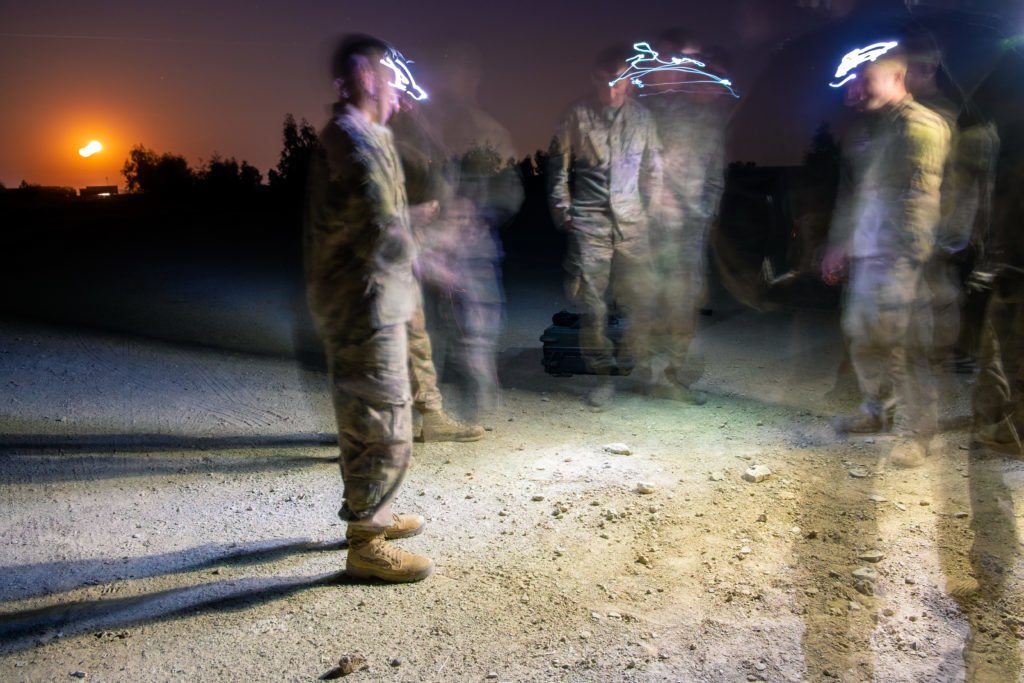
In the ensuing months, the artillerymen continued firing on the island. “[We’ve hit it] a lot. Not enough apparently,” said Staff Sgt. Ryan Madrid. “Whoever keeps going back hasn’t learned their lesson.” Madrid said he joined the Army after losing a bet — though he wouldn’t elaborate on what, exactly, the bet entailed. He’s a member of the battalion’s Charlie Battery and was leading soldiers operating a howitzer named “Catastrophe.”
During a nighttime fire mission on November 15, just a week after a rocket attack on Q-West by Kataib Hizbollah, Madrid and his soldiers traded stories about the attack. They laughed and joked about how each of them responded. His team had been off the gunline when the rockets came in. Some were in the gym, others were sleeping. When the sirens first came on, many of them thought it was a drill at first — then quickly realized it was real.
“I was in a bunker with some of the infantry nerds,” Madrid said of the night of the November 8 attack. The team began talking friendly smack about the infantry guarding the base; several point out that almost all soldiers learn basic infantry tactics but that the infantrymen would have no idea how to operate, load, or fire the weapons they use.
That night’s artillery strikes had no particular target; it was a show of force after Kataib Hezbollah’s rocket attack. “[It’s to say], you know, ‘don’t fuck with us, this is what we have,’” one squad leader said. “Our battalion commander wants us to fire all six guns and say, ‘This is what we got, don’t do it again.’”
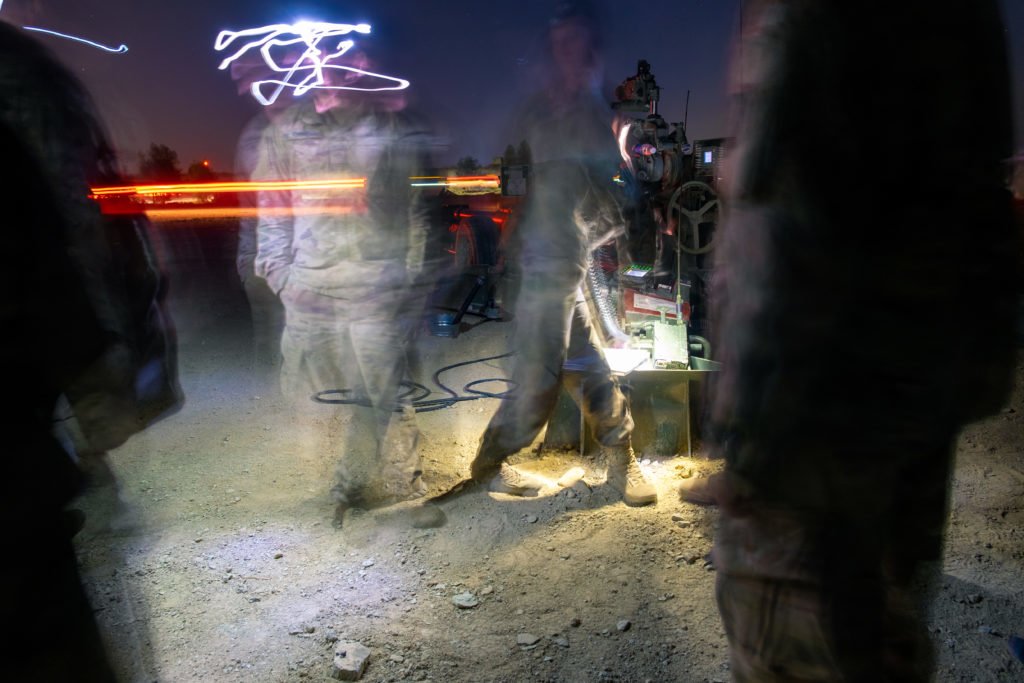
Up to that point, the November 8 rocket attack was the first real moment of danger most of the artillerymen had experienced on the deployment. Soldiers mostly sat and waited for orders to support Iraqi troops requesting strikes on enemy targets, for practice shoots, or for anything else to do. For those who were on the gunline that night, they scrambled to shoot back — it was one of the first counterfire missions in years.
As Madrid’s team waited to begin their fire mission that night, they looked up at the stars and began arguing about whether constellations are the same in Iraq as they are in the states. “I’m telling you, the Big Dipper is up there,” one soldier insisted. “Then where the fuck is it? Point to where it is,” another retorted.
Between fire missions, it’s mostly just sitting. Soldiers on the line take turns sleeping, working out at an improvised open-air gym near their tents, playing cards, and reading. Some hold impromptu rock-throwing contests to see who can throw the farthest. Boredom is often their most persistent enemy — constantly tempting them with complacency. They try to keep their minds engaged however they can.
It can be isolating and very compartmentalized. Unlike the infantrymen who occasionally leave the wire on missions to visit local villages and Iraqi military units, the artillerymen often know very little about who they’re shooting at or why — let alone who might be shooting at them. Their job is to position and load their weapons, then pull the cord to fire.
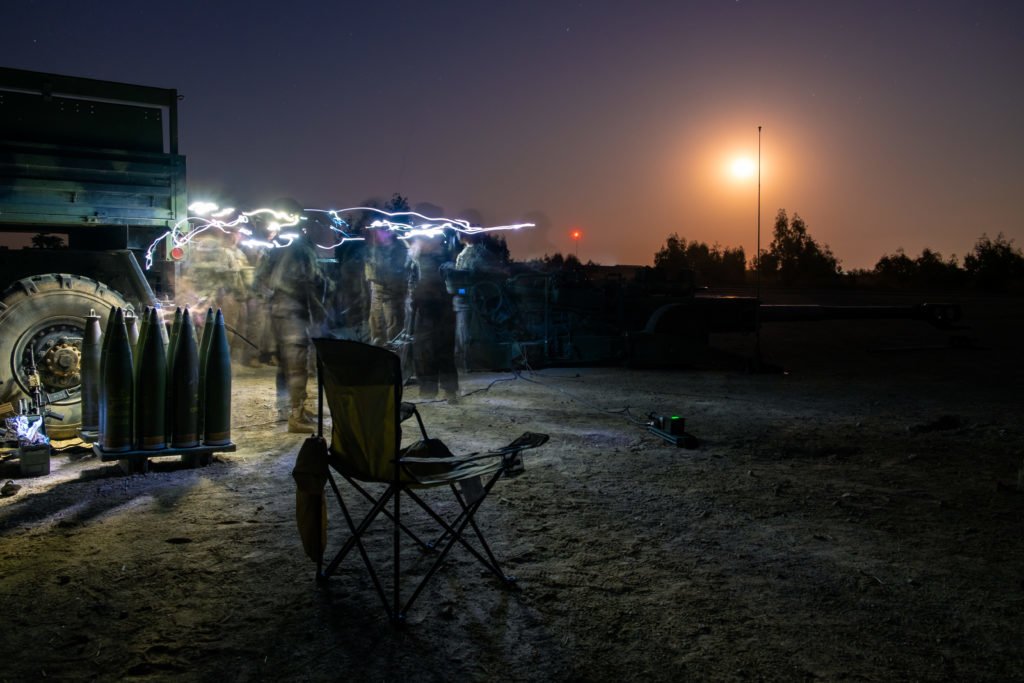
“Anyone that’s not in this firing base, we don’t really interact with,” one team leader said. “We go to the gym, work out, go to the DFAC, come back. This is where we eat, this is where we sleep, this is where we shower, this is where we shit. This is where our job’s at.”
For the soldiers in the TOC directing the artillery fire, the world looks different. They have to carefully navigate the politics of a mission with multiple competing factions. “You need to tell them to stop flying there,” one soldier told another of a recent U.S. Air Force flight. “That’s a PMF camp. We really don’t need any drama over there right now.”
American forces need to clear almost all operations with their Iraqi counterparts — they’re operating out of their bases, in their country, under an arrangement with their government. The Americans work to keep tabs on which factions are where, which villages are suspected of being used by militants, and, perhaps equally importantly, which ones are considered friendly and have local leaders that routinely help Iraqi and Coalition troops by reporting on ISIS movements. Artillery falling in the wrong place could cause serious problems.
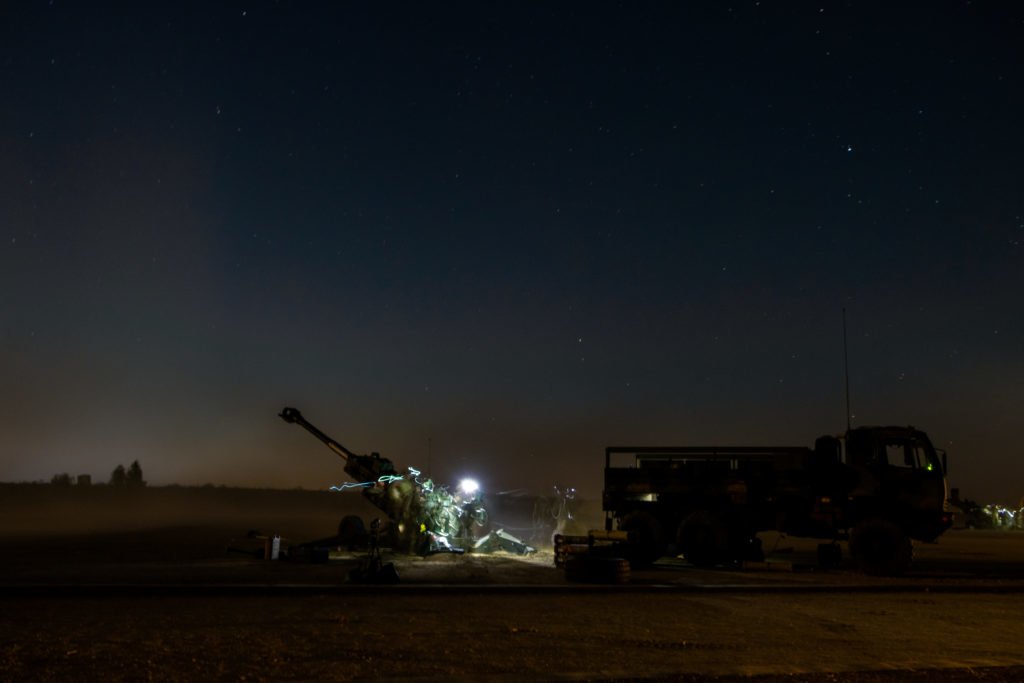
Even with their sophisticated surveillance and intelligence-gathering capabilities, they often need to rely on local knowledge to make sense of what they’re seeing. Contracted Iraqi American linguists play a key role in the operation, as does maintaining contact with local Iraqi military and civilian leaders. They regularly invite Iraqi leaders to the compound for meetings.
“On a day-to-day basis, it can feel like disconnection and more orientation from what we can see through various sensors throughout the area,” said Thibodeau. “There needs to be a mutual level of trust, and that level of trust can’t happen with just talking on a cell phone.”
Current tensions between Iran and the United States have thrown the entire region into a state of uncertainty. Some Iraqis felt America’s decision to kill Soleimani and Muhandis at Baghdad International Airport violated Iraq’s sovereignty, though many Iraqi protesters also celebrated upon learning of their deaths. The Iraqi Parliament passed a nonbinding resolution to force U.S. troops to leave the country — the vote occurred without most of the Sunni or Kurdish blocs present. Most U.S. troops operate in predominantly Kurdish and Sunni areas.
Iraq’s Caretaker Prime Minister Adil Abdul-Mahdi requested a timeline for American withdrawal, but he technically resigned last year in the face of stiff opposition from Iraq’s protest movement. Iraqi president Barham Salih announced on February 1 that he had named Mohammed Tawfiq Allawi as Iraq’s prime minister-designate. Allawi has vowed to support protesters, though protesters have already condemned his appointment and many still demand a new round of elections.
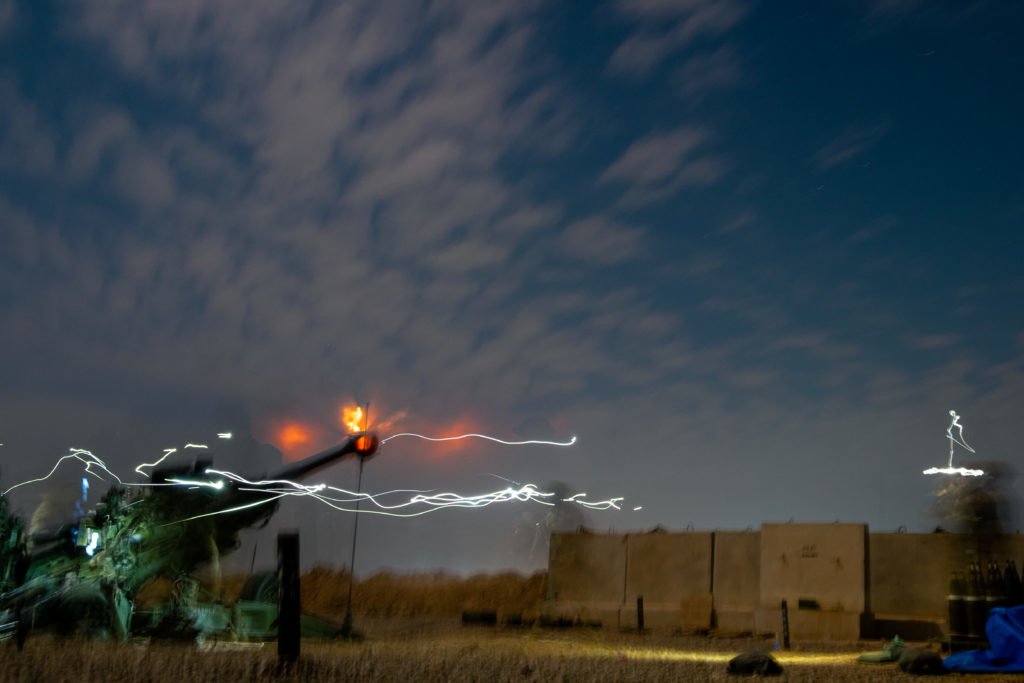
Though some joint operations between Iraqi forces in the Coalition are resuming for the time being, Iraqi officials are exploring alternatives to the U.S.-led Coalition, including a Coalition without U.S. leadership and the possible expansion of a seperate Canadian-led NATO mission (which also paused operations during the flair up of tensions) to take its place.
In the meantime, Iraqi protesters continue clashing with security forces and Iranian-backed militias in the south. Iraqi commandos continue hunting ISIS in the north. Periodic rocket and mortar fire continues. What comes next is uncertain, but as revolution and international gamesmanship continue to shape events around them, American troops are along for the ride.

Kevin Knodell is a freelance journalist and author. His work has appeared at Foreign Policy, Playboy, Soldier of Fortune, and others. He’s the associate producer of the War College Podcast and a former contributing editor at Warisboring. He’s the co-author of the graphic novels The ‘Stan and Machete Squad, and he currently writes the Acts of Valor comic series for Naval History magazine.
BRCC and Bad Moon Print Press team up for an exclusive, limited-edition T-shirt design!
BRCC partners with Team Room Design for an exclusive T-shirt release!
Thirty Seconds Out has partnered with BRCC for an exclusive shirt design invoking the God of Winter.
Lucas O'Hara of Grizzly Forge has teamed up with BRCC for a badass, exclusive Shirt Club T-shirt design featuring his most popular knife and tiomahawk.
Coffee or Die sits down with one of the graphic designers behind Black Rifle Coffee's signature look and vibe.
Biden will award the Medal of Honor to a Vietnam War Army helicopter pilot who risked his life to save a reconnaissance team from almost certain death.
Ever wonder how much Jack Mandaville would f*ck sh*t up if he went back in time? The American Revolution didn't even see him coming.
A nearly 200-year-old West Point time capsule that at first appeared to yield little more than dust contains hidden treasure, the US Military Academy said.












